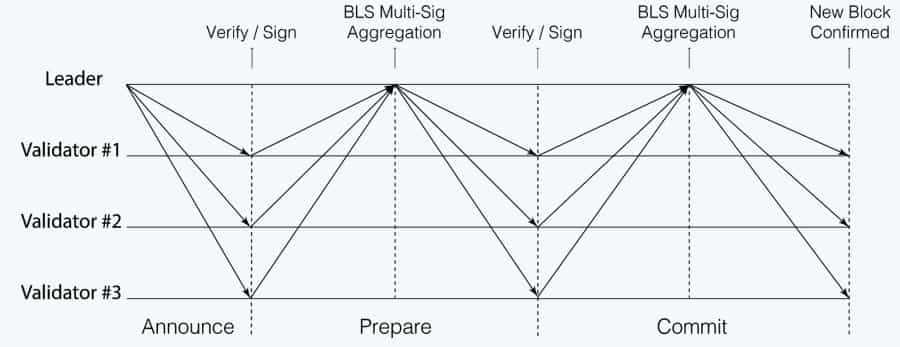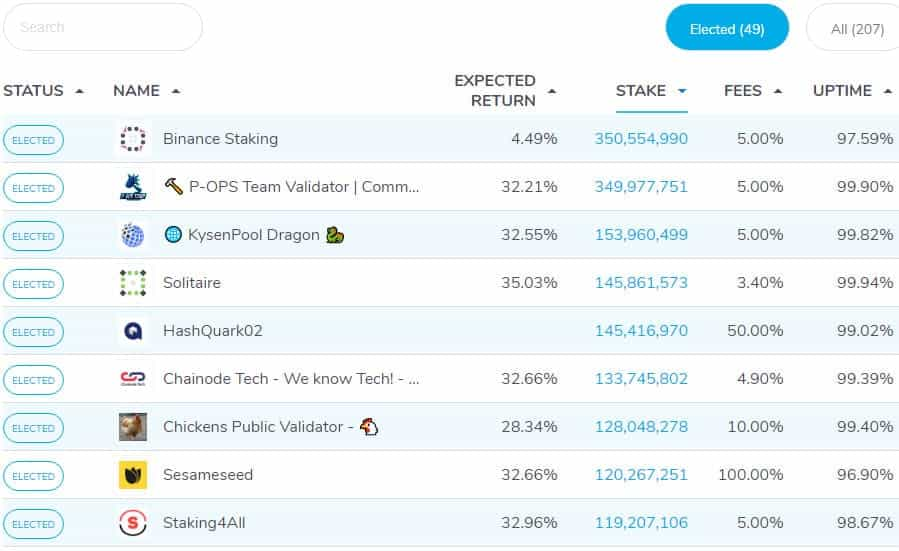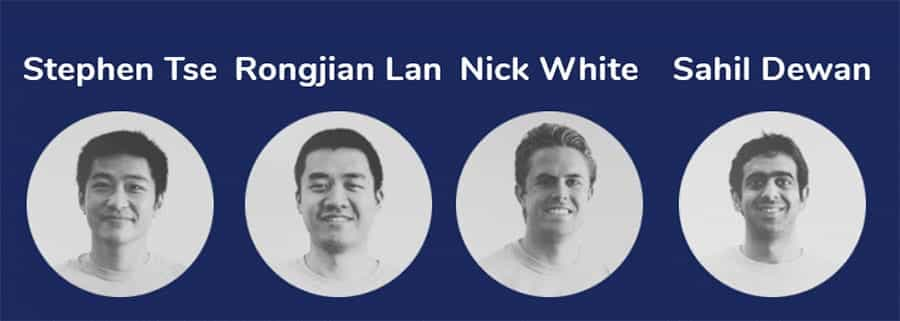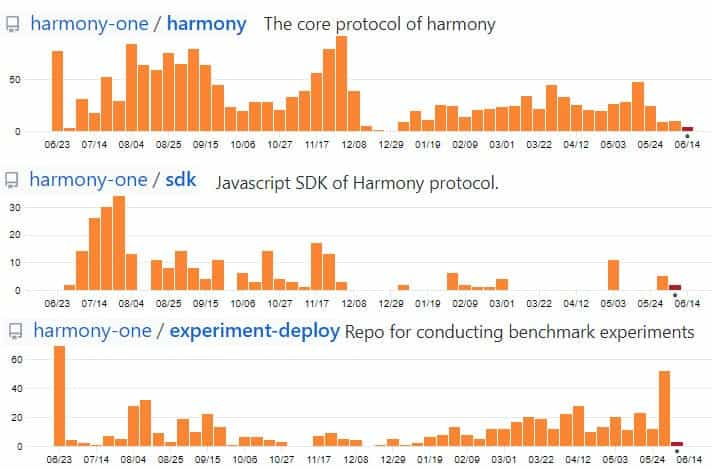Harmony (ONE) is one of the latest projects that is trying to tackle the issue of blockchain scalability. They have built their platform from the ground up with optimisation in mind.
Using a "full-stack" approach, Harmony is developing a sharding based blockchain that is not only scalable but provably secure, and energy efficient. They are also the latest project to be raising funds on the Binance Launchpad. This after completing a large private seed sale back in May of 2018.
So, should you consider it?
In this Harmony review I will give you everything you need to know to make that decision. I will dig into their technology, team and development. I will also analyse the long term adoption potential of their ONE token.
What is Harmony?
Harmony provides a high-throughput, low-latency and low-fee consensus platform designed to power the decentralized economy of the future. They plan to address the issues faced in other blockchain ecosystems through the use of the best research and engineering practices in an optimally tuned system.
The technical focus of the project is on resharding and secure staking with decentralized randomness. Harmony also implements optimal cross-shard routing and fast block propagation.
In practice, Harmony helps businesses to build marketplaces for fungible token usage (such as loyalty points or energy credits) and non-fungible assets (such as in-game digital assets). Harmony also uses its zero-knowledge proofs to enable data sharing with consumer privacy.

This incentivizes users and could be used for credit ratings, ad exchanges, and other data sharing that’s traditionally seen centralized platforms profiting and users being left with nothing.
After launching its mainnet in June 2019 Harmony has seen excellent growth, and as of June 2020 there are more than 1,000 nodes helping to decentralize the network. The project has also been able to migrate from the ERC-20 and BEP-2 tokens originally issued to its own native tokens.
Finally, the project has implemented a staking system based on Effective Proof of Stake (EPoS). It’s been a busy year at Harmony, so let’s dig in and explore some of the details of the progress being made.
The Harmony Technology Stack
In order to achieve the goals of scalability the Harmony built the entire technology stack from the ground up with a focus on optimisation. They have built in a number of important innovations into their Consensus Protocol, internal systems and network engineering.
By implementing these innovations, Harmony will provide a platform for Decentralised Applications (dApps) which were not feasible on other blockchains. These include dApps such as decentralised exchanges, high-throughput payment systems and Internet-of-Things transactions.
Consensus Protocol
Blockchains are goverened by consensus and the type of protocol used can drastically impact on the speed with which decentralised consensus is achieved. Currently, blockchains such as Bitcoin's, use Proof-of-Work consensus protocols which have become inherently expensive and slow.
Other protocols such as Proof-of-Stake use different incentive mechanisms that overcome some of these challenges. Indeed the Ethereum protocol is trying to move to their Casper PoS consensus to address their scalability issues. However, PoS has its own unique challenges.

The Harmony consensus protocol, which they call Effective Proof of Stake, uses the latest design principles such as sharding and pipelining. This allows the network to process numerous different transactions in parallel. This means that there is no single bottleneck to the confirmations for all of the transactions.
Essentially, with the Harmony approach, connection latency is greatly reduced and the transaction throughput can scale as the network grows.
Network Infrastructure
Harmony is implementing networking techniques that can improve the speed of message propagation and achieve consensus faster. As stated in their whitepaper, Harmony uses RaptorQ fountain code which allows the network to propagate blocks quickly or within shards. Not only does Harmony shard its network nodes, it also shards blockchain states, which allows for linear scaling in all three aspects of storage, transactions, and machines.
They also adopt Kademlia routing which is able to achieve these cross-shard transactions which can scale logarithmically with the number of shards in the network. This entire implementation allows Harmony to run a highly concurrent protocol.
The infrastructure has also been decentralized to avoid single shard attacks. Eventually the network is built to contain shards of 1,000 nodes in order to provide cryptographic randomness and to re-shard regularly, however currently Harmony is using four shards of 250 nodes each.
This gives the network a strong security against Byzantine behaviors. In addition the network uses a Verifiable Random Function for unpredictable and unbiased shard membership.
The ONE Token Ecosystem
The Harmony platform is powered by the native ONE token, which allows users to participate in the ecosystem and serves as a payment mechanism for various actions. By using the Harmony blockchain developers and businesses are able to create alignment in the goals and incentives of various stakeholders.
In addition, the upcoming zero-knowledge proof implementation will make Harmony a data sharing platform that is capable of overcoming the common problem of many data markets; that is the mistrust that participants have for sharing data, even as they have a strong desire to acquire the data of others.

The Harmony ONE token is designed to have the following three functions within the protocol:
- The token is used as a stake for the EPoS consensus model, allowing staking holders to earn block rewards and transaction fees.
- The token will pay for transaction fees, gas fees and storage fees.
- The token will be used in the governance of the protocol by allowing token holders voting rights for on-chain governance.
In January 2020 Harmony kicked off the migration of the ONE token from the Ethereum and Biannce chains to its own blockchain. This was needed to realize the plans for staking and on-chain governance. Users are required to swap their ERC-20 (Ethereum) and BEP-2 (Binance) tokens for native ONE tokens if they wish to participate in staking, governance or any other network activities.
As of June 2020 the harmony team has not announced a deadline for the swap to the native ONE coins. Holders should know there is no way to manually swap the tokens to mainnet coins. The process is done automatically on any exchange that is participating with a bridge to Harmony.
That includes BitMax, Binance, KuCoin, Gate.io and the staking service HonestMining. To make the swap simply deposit any ERC-20 or BEP-2 ONE tokens on a participating exchange and when withdrawn the native ONE tokens will be delivered.
Staking Harmony ONE Token
Harmony made history on May 16, 2020 when it launched staking, making it the very first sharded blockchain to offer staking. According to the Harmony team staking was necessary in order to create trust for network participants without knowing them.
This will allow for much greater decentralization as it opens up the protocol to the public. Now that staking has been made available 320 of the 1,000 nodes are being run by the public rather than by Harmony or one of its trusted partners.

Staking launched with 16 staking partners who can be used by anyone to easily stake coins. These partners include Staked, Stake.fish, Blockdaemon, Everstake, and InfStones among others. Several exchanges also provide staking, such as BitMax and Binance. The current reward for staking is just north of 10%, although any of the staking services will keep a small portion. You can see a full list of current staking services here.
It isn’t required to use a staking service though, and the Harmony team encourages standalone staking because of the decentralization benefits. Running a validator requires 10,000 ONE tokens (currently worth $43) as well as a computer with a minimum of two cores, 2GB of memory, and 30GB of storage.
However due to the current limit of 320 public nodes the actual minimum required to run a node is roughly $20,000 worth of ONE tokens. Eventually there will be slots for 1,000 public validators.
The Harmony Team
The team behind Harmony is combined of experts in building lasting companies, engineering, and academic research. They come from the likes of Google, Amazon, Apple, Microsoft and a number of successful startups. And they’ve worked on some of the largest systems in the world such as the AWS infrastructure, Apple’s Siri, and Google Maps.
While the team remains small, with just 20 full-time members and an additional 4 collaborators, they bring to the table experience in software development, machine learning, artificial intelligence, virtual reality, and blockchain technology.
The CEO and leader of the team is Stephen Tse, an avid coder who has spent his life studying and working on compilers and security protocols. He graduated with a doctoral degree in security protocols and compiler verification from the University of Pennsylvania.

He then went on as a researcher at Microsoft Research, a senior infrastructure engineer at Google, and a principal engineer for search ranking at Apple. Later he founded the mobile search Spotsetter with institutional venture capital; Apple later acquired the startup.
There are four additional co-founders, most of whom are artificial intelligence experts, and one who is a Harvard MBA.
The Harmony team completed a private seed sale of tokens back in May of 2018. In this sale, they were able to raise about $18m in exchange for 22.4% of the total token supply (price of c. $0.0065). There were a number of blockchain focused VC funds that took part in this. The full list can be seen on the Harmony website.
The Harmony Community
Harmony has pursued a blend of offline and online community building. Since 2017 the Harmony team has held a weekly 4-hour meetup in San Francisco to increase interest in the project and to increase its community of partners.
The online community building has led to a smallish group, but one that appears to be extremely well engaged and excited about the potential for the Harmony protocol. For example, the Harmony subreddit has just 1,300 readers, but there are multiple daily posts and a number of comments on each post. The subreddit has only been in existence for 3 months.
Other social media accounts are equally small, but with equally engaged communities. The Twitter account has just over 6,000 followers, but an outsized number of shares and comments on its tweets. The Telegram channel is the largest community, with over 11,700 members.
Overall the Harmony community is a positive and encouraging sign. It may be small, but the members are very engaged and excited about the possibilities of the protocol.
The ONE Token
As noted above the ERC-20 and BEP-2 ONE tokens have been deprecated and the official coin is now the native ONE coin. Users holding the Ethereum or Binance chain versions can easily swap them by depositing them at an exchange that has a bridge to Harmony, such as Binance, Gate.io, BitMax, and others. Once deposited the deprecated tokens are automatically converted to native ONE tokens.

As a staking token ONE is expected to gain in value, and in fact it has doubled since hitting a mid-April low of $0.002109. The real gains began after Harmony announced staking, with the token jumping from a value of $0.002684 before the announcement of live staking, to $0.004310 just one month later. It should be noted that this is slightly below the $0.004730 value of ONE on January 1, 2020 but the upward momentum is promising.
As far as storing your ONE tokens, the Ledger is your best choice. There's no native staking wallet yet for ONE, but it is in development. In the meantime the multi-currency Guarda, Trust Wallet, and math Wallet all support storing ONE coins.
Harmony Development & Roadmap
The Harmony project has been working on their protocol for over two years already and has made significant progress. Determining exactly how much work has been done can sometimes be tough. However, one of the best estimates is to take a look at the coding activity in their public repositories.
Hence, I decided to jump into the Harmony Protocol GitHub to check out what the developers have been pushing since the project launch. Below are the code commits for three of their most active pinned repos.

As you can see, there has been quite a lot of activity and commits to these repos over the past year. It is also worth noting that there are another 16 repositories in their GitHub – some of which that also have significant activity. There may also be other work that is taking place in private repos that have not being published yet.
This is indeed quite encouraging and is a far departure from the previous ICO status quo. Projects would raise millions of dollars with nothing more than a whitepaper. In fact, the level of development that I see here is more than I have seen with other projects which ICOed 1-2 years ago.
All of this development does make sense when you take a look at the milestones the team has met over the past year. There is also much more to look forward to in their roadmap for the rest of 2020:
- Q1 & Q2 2020: Open staking implemented, EPoS mechanism added, token swap to native ONE token implemented, stablecoins added, and HRC-721 added for branded assets. SEED becomes the very first HRC-721 token, and Harmony becomes the very first sharded blockchain to implement staking.
- Q3 2020: Improvement to 3-second finality, and the addition of DeFi middlewares. Creation of staking wallet and an Ethereum bridge, as well as global fiat gateways.
- Q4 2020: Auditable privacy and cross-border finance. 100% decentralized nodes and community governance.
If you would like to keep up to date with the latest from the developments from the project then you can always head on over to their official blog.
Conclusion
Given the active community behind the Harmony project it should come as no surprise that the project has been seeing increased adoption and a rise in the price of its token now that ONE is both native and Harmony is an EPoS blockchain that rewards those holding ONE tokens.
The project was able to launch its mainnet in June 2019, which is just over a year after beginning development. And despite the rapid evolution of the project it has held up well, showing the strength of its design. The token suffered alongside the entire cryptocurrency markets through 2018 and 2019, but has been coming on strongly in 2020 as demand for the token and the blockchain is seen to be increasing.
The team behind Harmony is a strong one, with a great deal of expertise in many areas that are useful for this type of project. So far the team has been able to hit its roadmap deadlines, and that’s a big positive.
The days where investors were willing to forgive late commits has passed, and these blockchain projects need to deliver what they said when they said it will be ready. Harmony has been able to do this successfully.
The largest threat to the project at this point is competition. Harmony will need to remain ahead of existing competitors such as Zilliqa (ZIL) as well as keeping ahead of any potential future competitors. So far it seems to be doing that easily, taking advantage of the rapid development cycles to add new functionality and improved scalability and speed.
Disclaimer: These are the writer’s opinions and should not be considered investment advice. Readers should do their own research.


